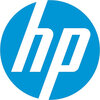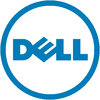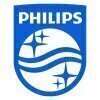
i
Voltas
Filter interviews by
Voltas Senior Engineer Interview Questions and Answers
5 Interview questions
A chiller is a device that removes heat from a liquid via a vapor-compression or absorption refrigeration cycle.
Chillers are commonly used in HVAC systems to cool buildings.
They can be found in industrial applications, such as cooling machinery.
Chillers help maintain optimal temperatures in data centers to protect equipment.
In food processing, chillers are used to keep products at safe temperatures.
A refrigerator removes heat from its interior to keep food and beverages cold, using a refrigeration cycle.
Uses a refrigeration cycle involving evaporation and condensation.
Heat is absorbed from the interior and expelled outside.
Commonly used to preserve food, medicines, and other perishable items.
Example: A refrigerator maintains a temperature of 35-38°F to keep milk fresh.
The refrigeration cycle is a thermodynamic process that removes heat from a designated area to lower its temperature.
1. Evaporation: Refrigerant absorbs heat from the environment, turning from liquid to gas.
2. Compression: The gas is compressed, increasing its pressure and temperature.
3. Condensation: The hot gas releases heat to the surroundings, condensing back into a liquid.
4. Expansion: The liquid refrigerant ...
Chillers and VRF systems differ in design, application, and efficiency, with various compressor types influencing performance.
Chillers are centralized cooling systems, while VRF systems are decentralized and allow for individual zone control.
Chillers typically use water or refrigerant to cool large buildings, e.g., centrifugal chillers for commercial use.
VRF systems use refrigerant as the cooling medium and can si...
COP measures efficiency in heating/cooling systems; heat load calculations determine required capacity for HVAC systems.
COP (Coefficient of Performance) is the ratio of useful heating or cooling provided to the energy consumed.
Heat load calculations assess the thermal energy needed to maintain desired indoor temperatures.
Types of PCBs (Printed Circuit Boards) in VRF (Variable Refrigerant Flow) systems include cont...
Voltas Senior Engineer Interview Experiences
2 interviews found
I appeared for an interview in Jun 2025, where I was asked the following questions.
- Q1. VRF (Variable Refrigerant Flow)
- Q2. What is work of refrigerator
- Ans.
A refrigerator removes heat from its interior to keep food and beverages cold, using a refrigeration cycle.
Uses a refrigeration cycle involving evaporation and condensation.
Heat is absorbed from the interior and expelled outside.
Commonly used to preserve food, medicines, and other perishable items.
Example: A refrigerator maintains a temperature of 35-38°F to keep milk fresh.
- Q3. What is work of chiller
- Ans.
A chiller is a device that removes heat from a liquid via a vapor-compression or absorption refrigeration cycle.
Chillers are commonly used in HVAC systems to cool buildings.
They can be found in industrial applications, such as cooling machinery.
Chillers help maintain optimal temperatures in data centers to protect equipment.
In food processing, chillers are used to keep products at safe temperatures.
I appeared for an interview before Apr 2024, where I was asked the following questions.
- Q1. What are the basics of the refrigeration cycle?
- Ans.
The refrigeration cycle is a thermodynamic process that removes heat from a designated area to lower its temperature.
1. Evaporation: Refrigerant absorbs heat from the environment, turning from liquid to gas.
2. Compression: The gas is compressed, increasing its pressure and temperature.
3. Condensation: The hot gas releases heat to the surroundings, condensing back into a liquid.
4. Expansion: The liquid refrigerant expan...
- Q2. What is the difference between chillers and Variable Refrigerant Flow (VRF) systems? What are the different types of compressors?
- Ans.
Chillers and VRF systems differ in design, application, and efficiency, with various compressor types influencing performance.
Chillers are centralized cooling systems, while VRF systems are decentralized and allow for individual zone control.
Chillers typically use water or refrigerant to cool large buildings, e.g., centrifugal chillers for commercial use.
VRF systems use refrigerant as the cooling medium and can simulta...
- Q3. What is COP and heat load calculations. Types of PCBs in VRF. What is AHU and types
- Ans.
COP measures efficiency in heating/cooling systems; heat load calculations determine required capacity for HVAC systems.
COP (Coefficient of Performance) is the ratio of useful heating or cooling provided to the energy consumed.
Heat load calculations assess the thermal energy needed to maintain desired indoor temperatures.
Types of PCBs (Printed Circuit Boards) in VRF (Variable Refrigerant Flow) systems include control P...
Top trending discussions






Interview questions from similar companies

I applied via Walk-in and was interviewed before Aug 2020. There was 1 interview round.
Interview Questionnaire
1 Question
- Q1. About my last job description
Interview Preparation Tips

Interview Questionnaire
2 Questions
- Q1. Coding questions on data structures and oops
- Q2. Various questions on cv, projects, por's, etc
Interview Preparation Tips
Experience: Questions were normal like any other aptitude or coding tests.
Tips: Time given was enough for other sections but you need to hurry a little in aptitude part.
Duration: 60 minutes
Total Questions: 60
Round: Technical Interview
Experience: The questions were basic, some where well known like reversing a link list using recursion, designing of car parking lot using concept of oops, find tree height/diameter, etc.
Tips: 1. They ask you to write complete code on paper. This sometimes turn out to be a challenging task when you don't have compiler to correct you on basic things. Practice writing codes on paper.
2. They surely ask questions on oops, like polymorphism, inheritance, etc. besides their definition, also practice writing sudo codes to explain them
Round: HR Interview
Experience: Mainly i was asked questions on my internship experience and POR's.
Tips: They will try to grill you on some questions like 'Why we should hire you?', have a clear reason in your mind. Your other answers should not contradict with your reasons
General Tips: I don't know about other colleges but HP recruits small number of students from my university. Coding questions were average level and can easily be tackled. Many students were rejected after HR interview so don't take it lightly. They do grill you in a very good style if they are in doubt about your selection
Skills: willingness, Enthusiasm, Coding skills, Aptitude skills
College Name: IIT Guwahati

I applied via Walk-in and was interviewed before Dec 2019. There were 4 interview rounds.
Interview Questionnaire
1 Question
- Q1. Only experience .
Interview Preparation Tips

Interview Questionnaire
1 Question
- Q1. Stge concepts, vSAN, RAID, basic testing, OS concepts, NVMe, SATA, SAS

I applied via LinkedIn and was interviewed before Dec 2020. There were 3 interview rounds.
Interview Questionnaire
1 Question
- Q1. Basic Language related questions
Interview Preparation Tips

Interview Questionnaire
1 Question
- Q1. All technical questions raised

I applied via Recruitment Consultant and was interviewed in Aug 2021. There were 4 interview rounds.
Interview Questionnaire
1 Question
- Q1. Questions on advance Java, Collections, Multithreading, and Spring Security
Interview Preparation Tips
focus more on Advance Java concepts and Multithreading,
Spring framework and Javascript

I applied via Approached by Company and was interviewed in Apr 2022. There were 4 interview rounds.

(1 Question)
- Q1. 7QC tools, VSM,
(1 Question)
- Q1. Low cost automation, Poka yoke
(1 Question)
- Q1. Salary expectation
Interview Preparation Tips
Voltas Interview FAQs
Some of the top questions asked at the Voltas Senior Engineer interview -
Tell us how to improve this page.
Voltas Interviews By Designations
- Voltas Assistant Manager Interview Questions
- Voltas Service Engineer Interview Questions
- Voltas Safety Officer Interview Questions
- Voltas AC Technician Interview Questions
- Voltas Site Engineer Interview Questions
- Voltas Sales Executive Interview Questions
- Voltas Management Trainee Interview Questions
- Voltas Senior Engineer Interview Questions
- Show more
Interview Questions for Popular Designations
Overall Interview Experience Rating
based on 2 interview experiences
Difficulty level
Duration
Interview Questions from Similar Companies
Voltas Senior Engineer Reviews and Ratings
based on 45 reviews
Rating in categories
|
Assistant Manager
580
salaries
| ₹6.3 L/yr - ₹13 L/yr |
|
Senior Engineer
222
salaries
| ₹4 L/yr - ₹9 L/yr |
|
Service Engineer
218
salaries
| ₹3.5 L/yr - ₹8 L/yr |
|
AC Technician
207
salaries
| ₹1.8 L/yr - ₹5 L/yr |
|
Hvac Technician
138
salaries
| ₹1.8 L/yr - ₹5 L/yr |

Blue Star

HARMAN

Philips

Godrej & Boyce Manufacturing
- Home >
- Interviews >
- Voltas Interview Questions










